Donatello, David
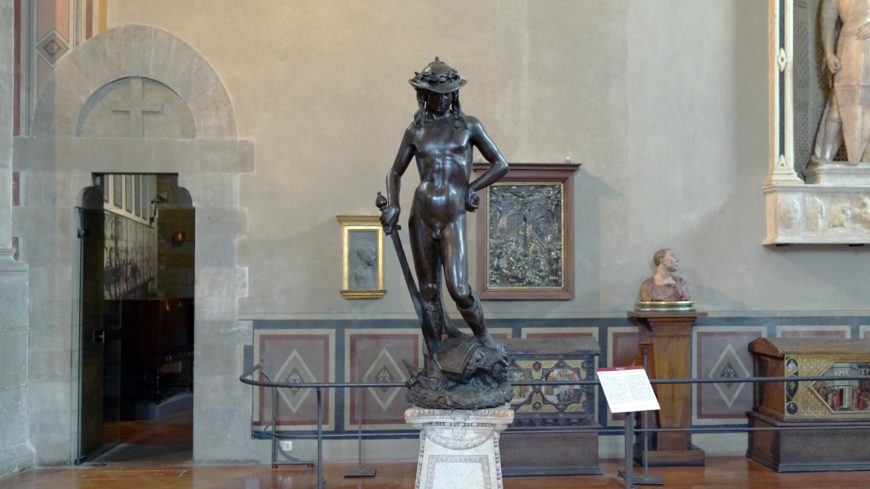
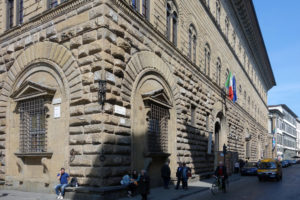
Between 1445 and the mid-1450s, Cosimo de’Medici, the most powerful man in Florence, built his family’s palace on a central thoroughfare in the heart of the city. A savvy patron, Cosimo was aware that the appearance of this formidable building, designed by Michelozzo would reflect upon his family. Although technically private citizens of a republic, in reality, the Medici clan dominated the city’s politics, a fact they shrewdly endeavored to obscure. The architecture projected an image of strength and refinement while drawing calculated associations with the city’s republican government through the rusticated stone of the lowest story mimicking that of the Palazzi dei Priori also known as the Palazzo Vecchio (the town hall). For a public figure like Cosimo, a private house was never private in our modern sense: the Palazzo Medici was a place of business (Cosimo was a banker and de facto ruler of Florence) and bustling social interactions with an open courtyard, visible from the street, leading to the main entrance. High upon an elevated base and visible when the main entry to the palace was open to visitors stood one of the most innovative sculptures of the early renaissance: Donatello’s bronze David.
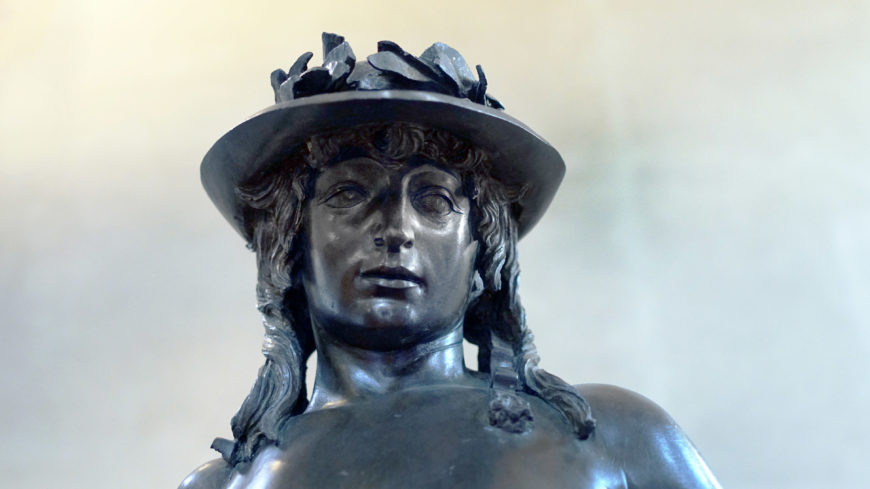
Donatello’s hero is remarkable for numerous reasons, not least of which is the sculpture’s all’antica (“in the manner of the antique”) form. In some ways the work epitomizes new trends in early renaissance art: it is the earliest known freestanding nude sculpture since antiquity. Furthermore, it is cast in bronze, a costly medium not generally used for large-scale freestanding sculpture in the medieval era—it would take a Medici to afford such an expense. Scholars have argued for a range of dates for the David, some placing its creation as early as 1428-30 and others as late as 1460.
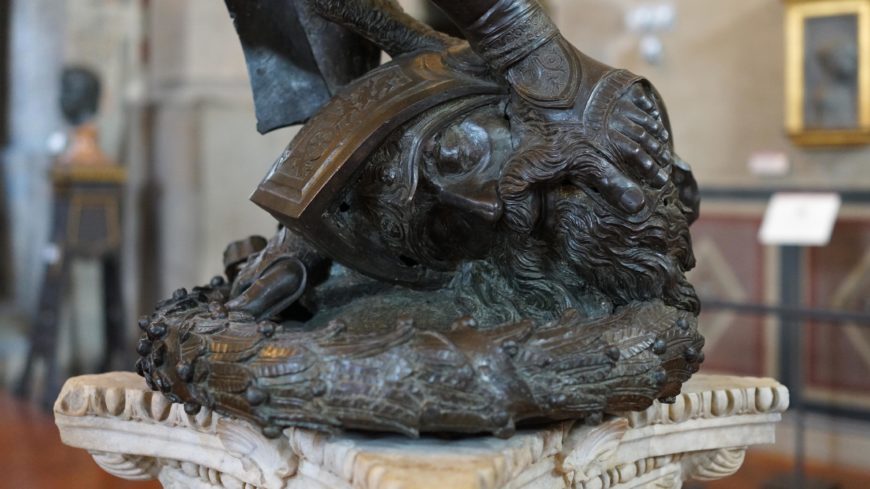
Who’s the naked guy?
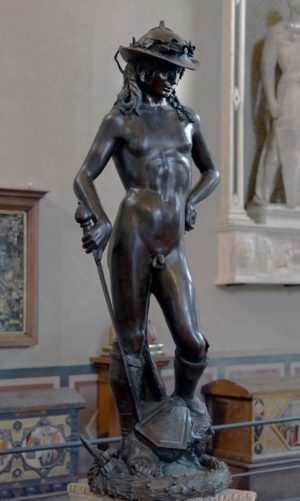
The subject of this statue is David, the future king and hero of the Hebrew Bible, who as a youth slayed the giant Goliath and liberated his people (the Israelites) from the tyranny of the Philistines. In Donatello’s sculpture, David’s immaturity is unquestionable: his nude body is that of an adolescent and is sharply contrasted with the heavy beard and maturity of Goliath, whose severed head is at his feet. David’s vulnerability is emphasized by the stone he clasps in his left hand, a reminder that though he holds a sword, he brought down his massive foe with a simple sling-shot. The message here is clear: David triumphed not through physical power, but through the grace of God.
While the biblical account (1 Samuel 17) does note that David chose not to face Goliath wearing the armor offered to him by his father, nowhere does it state that he removed his clothes completely. In all earlier images of David, including an earlier marble version carved by Donatello himself, David is clothed. The choice to depict David as completely nude, except for a shepherd’s hat adorned with laurels of victory and elaborate sandals, was unprecedented.
Exposing his youthful (weak) body overtly reinforces the miraculous nature of his triumph. David is literally bared before God and the viewing public, victorious through God’s will alone. Standing in contrapposto and displaying accurate anatomy, the sculpture also demonstrates the growing interest in humanism, an intellectual movement that looked to the Greco-Roman past for inspiration.
In ancient art being shown without clothing often had positive connotations: ancient Greek and Roman gods and heroes signaled their virtue through their idealized nude bodies. By showing David in the nude, Donatello appropriates this convention. From the point of view of renaissance Christians, David’s nudity would have been seen as an improvement upon the ancient tradition, heroizing a Judeo-Christian subject rather than a pagan one.
But . . . isn’t he a little too sexy?
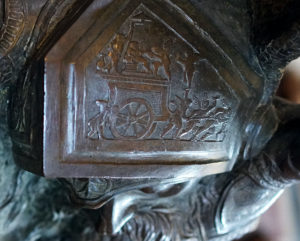
The sexual ambiguity, even effeminacy, of Donatello’s David helps emphasize that the youth’s victory could only be achieved by God’s intervention. When viewed from up close—an experience likely only available to privileged visitors to the palazzo—this androgynous nudity is further complicated by erotic undertones. Goliath’s helmet is adorned by a scene of Eros (Love) riding a chariot and a feather delicately caresses David’s inner thigh, both elements suggest themes of erotic love.
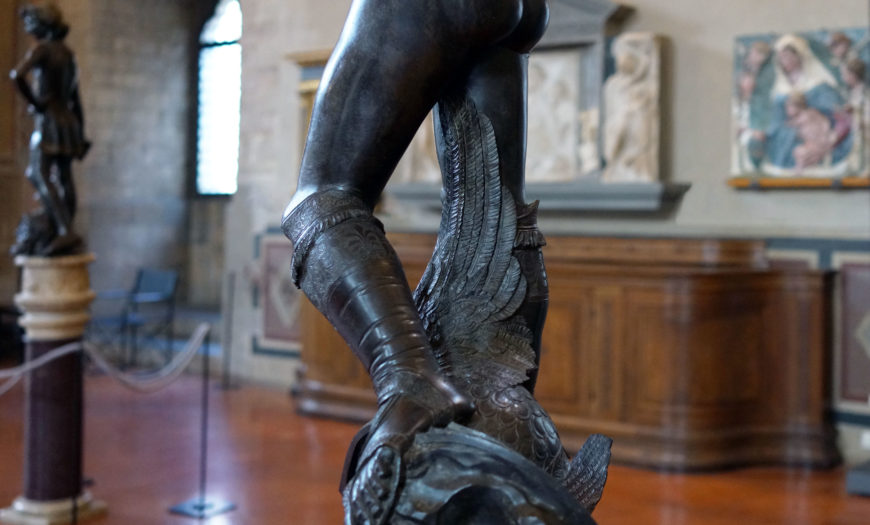
Scholars have tied this eroticism to Florentine obsession with youthful male beauty, an interest that is evidenced in numerous works of art and even brought the ire of Florentine preachers who called it a sinful perversion. The fact that the sword, hat, and sandals are of contemporary Florentine fashion and not that of biblical times, suggests a connection to these renaissance preoccupations. Of course, David’s beauty, his desirability, was also part of the biblical tradition. He is referred to as “most beautiful among the sons of men” in Psalm 44 and the name “David” was translated to mean “beloved.” The message would have been clear to renaissance Florentines: Donatello’s David embodies desirability, he is beloved by God and this is the source of his victory.
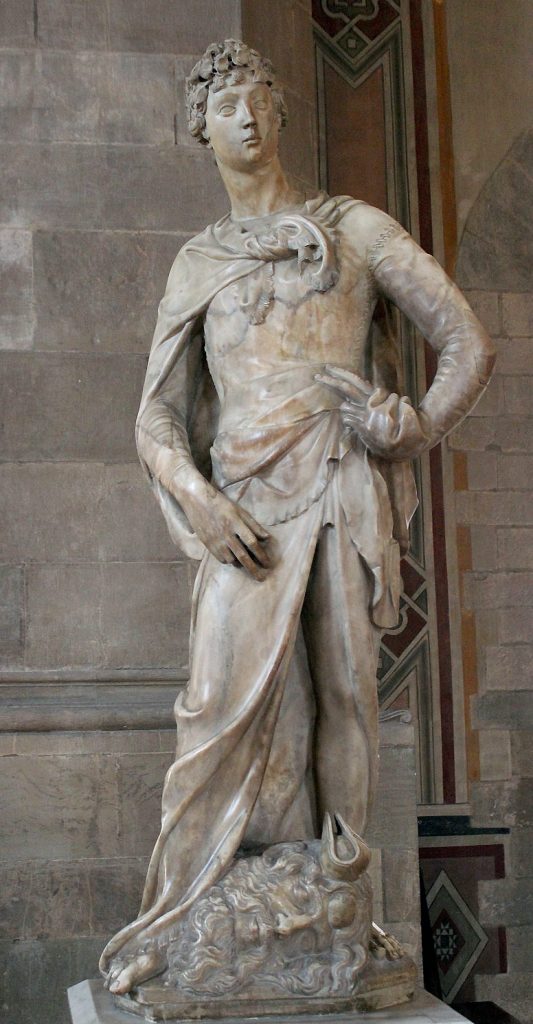
Symbol of Florence, symbol of the Medici (or “let’s pretend we’re not really tyrants”)
By the time the bronze David was created, the hero was already a symbol of the Florentine Republic. By placing this civic hero in their private courtyard, the Medici claimed for themselves this state symbol, making David a Medici emblem as well as a Florentine one.
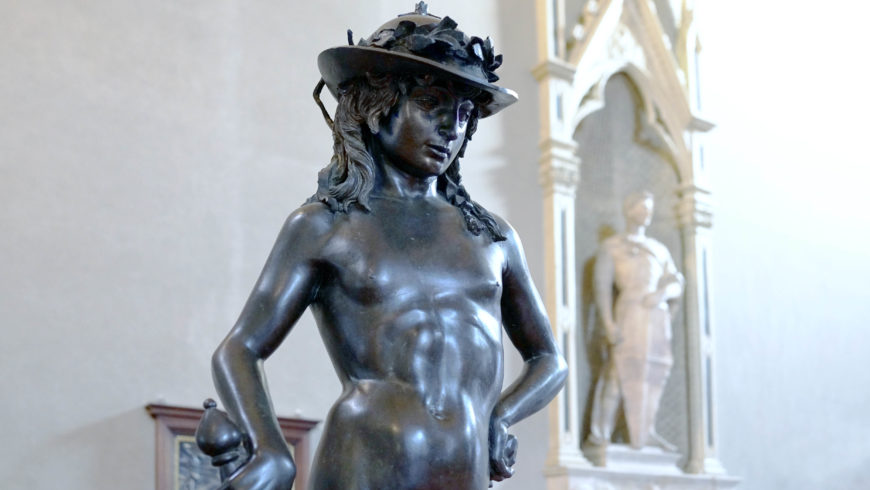
For a family of supposedly private citizens of a republican state who were all but absolute rulers in practice, the Medici had good reason to associate themselves with David’s anti-tyrannical symbolism. Cosimo and his family likely wanted all visitors to their palace to regard them—like David—as defenders of liberty. This reading is reinforced by an inscription (now lost) that once adorned the column at the statue’s base: “The Victor is whoever defends the fatherland! God crushes the wrath of an enormous foe. Behold! A boy overcame a great tyrant. Conquer, O citizens!” [1]
- Dr. Heather Graham, "Donatello, David," in Smarthistory, August 10, 2021, accessed February 27, 2023, https://smarthistory.org/donatello-david/ ↵

